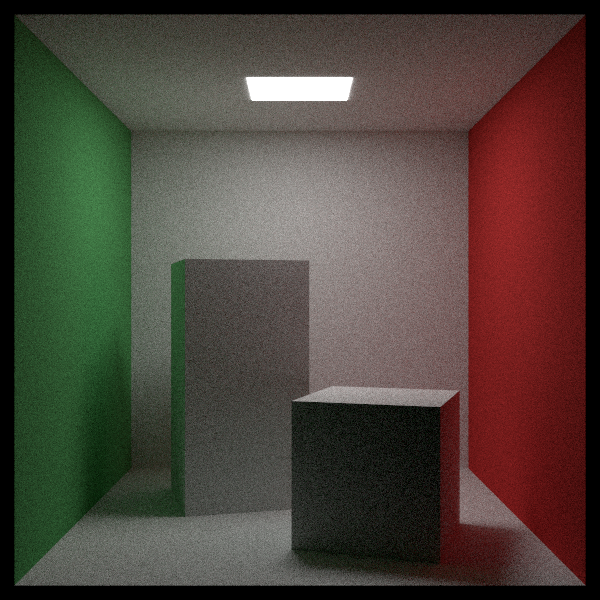This is the result of me following Ray Tracing in One Weekend, more or less closely in an attempt at grokking some aspects of raytracing. The project will follow at least up to The Next Week before a probable hiatus until I understand Importance Sampling.
- The implementation language : Rust
- Command line support
- Math based on nalgebra and rand (and rand_distr).
- Using the image for PNG read/write.
- Multi-threading based on slicing or tiling the final buffer to attribute one to each thread. Raw important speed boost for CPU with higher number of cores.
- A global
Transformhittable wrapping aMat4instead of specific ones.
-h | --help(provided by arg)--width [width]Render width, default 400--height [height]Render height, default 300-d [num] | --depth [num]Ray depth (a.k.a. number of bounces), default 10-s [num] | --samples [num]Samples per pixel, default 100-t [num] | --thread [num]Number of worker threads, default 4-o [path] | --output [path]Path for file output (-o -to force output to stdout).- Reads the filename's extension to guess the encoding type.
.png.ppm(and fallback format)
- Reads the filename's extension to guess the encoding type.
Here's the command line to generate the provided picture:
# -- Delimits cargo's arguments from the executable's
$ cargo run --release -- --width 600 --height 600 -d 10 -s 1000 -t 8 -o .meta/rotation_boxes.png(The actual result will change according to what scene is currently written in the source code.)
- Mesh support.
- Scene description
- Animation support (mostly rendering N frames)
- Explore ideas around game engine oriented probes (ambient and reflection)
